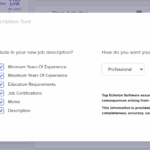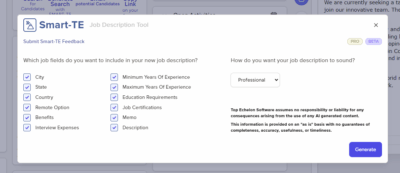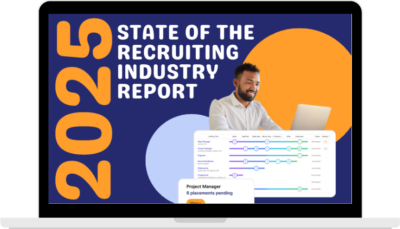(Editor’s note: The information from this article by Top Echelon Recruiting Software has been taken from an Expert Recruiter Coaching Series webinar by Barb Bruno, CPC/CTS of Good as Gold Training titled, “Filling More of the Business You Write.” Click HERE to watch the video of that training webinar for free.)
In today’s high-demand, candidate-short recruiting landscape, one brutal truth stands out: most recruiters are failing to fill the business they write.
According to Barb Bruno, CPC/CTS and industry trainer with over 30 years of experience, the average recruiting firm fills less than 15% of their job orders, contracts, and assignments. And yet, the solution isn’t to write more business — it’s to fill more of the business you already have.
In this article, Bruno shares eight data-driven, field-tested strategies designed to help recruiters and staffing professionals boost their fill rates, elevate client satisfaction, and dramatically increase income. Here’s how to turn those open job orders into filled placements — and why now is the best time to do it.
Strategy 1: Identify Your Best Business
Too many recruiters chase every order that comes their way, treating every opportunity equally. Bruno urges a smarter approach: revenue modeling.
“Don’t look at what you wrote. Look at what you filled,” she said. “Study every filled placement from the past two years and find the patterns.”
You want to break down each filled order by:
-
Industry
-
Location
-
Company size
-
Job title
-
Salary range or bill rate
-
Time-to-fill
-
Payment habits
-
Retention rate
This creates a crystal-clear picture of your most profitable, fillable business. Then, target companies that match this profile.
“There are riches in niches,” Bruno emphasized. “If you place a pharmacist one day and an engineer the next, you’ll never build synergy or get referrals. People need to know what you’re known for.”
Specialization helps your recruiters pipeline candidates in advance, send them on multiple interviews, and drastically reduce time-to-fill. Candidates and clients begin to track you down — because they know you specialize in exactly what they need.
She also warns against taking on unfillable roles: “If the money isn’t commensurate with experience, stop writing it. If it’s a purple squirrel, ask for a retainer — or walk away.”
Strategy 2: Get All Interviewers on the Same Page
One major roadblock to filling business is misalignment — when interviewers don’t agree on what they’re looking for. The fix? Start with performance objectives.
“We used to rely on job descriptions and skill lists,” Bruno said. “But I realized that wasn’t helping me wow my clients. So I started asking every hiring manager: Six months from now, how will this person be evaluated?”
Performance objectives bring clarity. They reveal what truly matters to the hiring team, align candidate screening, and improve close rates. Often, when comparing the job description with performance objectives, recruiters discover major disconnects — tasks the candidate will never do, or key responsibilities that weren’t mentioned.
Another practical tip: Send your version of the job order to every stakeholder in the hiring process and ask them to sign off. “Even with our long-term clients, 50% of the time they make changes after reading our job order,” Bruno shared. “Title, salary, responsibilities — not just small stuff.”
This step ensures everyone is aligned and dramatically reduces the chance of last-minute surprises or rejections.
Strategy 3: Prioritize the Right Business
With so many job orders flooding in, it’s tempting to treat every role as a priority. But that’s a recipe for burnout and low fill rates. Bruno recommends prioritizing orders based on these questions:
-
Are they considering internal candidates?
-
Do they already have strong applicants?
-
What’s the top-priority role with no coverage?
-
What’s the real cost of the job being open?
And most importantly, get a target date to fill and three interview times in advance. “Your job in three words is: Book. More. Sendouts. That’s it,” she said.
Also, confirm whether you’ll have access to a backup contact in case the hiring manager is unavailable. This ensures you can still book interviews and keep the process moving.
Recruiters also need selling points from the client — not generic information from the website, but authentic, compelling insights that make candidates excited to interview. Find out what’s missing from candidates they’ve already seen. That’s your value-add.
“If there’s no problem created by this job being open, there’s no urgency to fill it,” she warned.
Strategy 4: Ask the Right Questions
A placement isn’t successful unless the candidate is retained and engaged. That’s why understanding the real motivation behind a job search is critical.
Bruno suggests asking candidates:
“If you were your boss, what five things would you change about your job?”
That’s often where the truth lies. If the only answer is money or advancement, she pushes further.
“Tell them to ask for a raise now,” she advised. “If they come back and didn’t get it, they’re far less likely to accept a counteroffer later. They’ll feel insulted.”
She also stresses the importance of asking:
“What must be there for you to accept a new job today?”
Then, revisit that question at every step in the process. Begin each follow-up call with:
“Has anything changed since the last time we spoke?”
“People’s situations evolve rapidly,” Bruno explained. “A job that made sense last week may not fit anymore — and you need to know that before you push them forward.”
And always ask:
“What will you do if your current employer gives you a counteroffer?”
Then document their answer. “When the counteroffer comes, read their own words back to them. Their words are far more powerful than anything you can say.”
Strategy 5: Present Top Talent Faster
Time kills deals. Clients want top talent quickly, and delays cost you placements. The key is pipelines — built around your best business.
“If your niche is civil, mechanical, and electrical engineers, that’s all you should be recruiting for. You’ll fill jobs faster and have candidates ready before the order even comes in,” Bruno explained.
Another powerful tactic: Set up Google Alerts for every client and prospect. Recruiters should stay current on news, layoffs, funding, or leadership changes. These insights become your selling points — the reasons candidates say yes.
“If your recruiters don’t have alerts set up, that’s your homework for the week,” Bruno urged.
And remember, timing matters: When recruiters know the target fill date, interview times, and alternate contacts, they focus. It becomes real, high-priority business.
Strategy 6: Give Your Sales Team Three Leads a Day
Barb Bruno runs a tight ship. In her firm, every recruiter must give three sales leads daily to the sales team — and she recommends all firms implement this.
Where do those leads come from?
Ask candidates:
-
How did you find your last job?
-
Who was the best engineer (or title) at your last place of employment?
-
Where do you want to work — and why?
-
Where would you never work — and why?
“When someone says they don’t know anyone, it’s because you asked the wrong question,” Bruno said. “Don’t ask, ‘Who do you know?’ Ask, ‘Who was the best [title] at your last job?’ That’s someone they’re comfortable naming.”
She also recommends converting reference checks into marketing calls. “If a candidate worked at a company your sales team is targeting, let the salesperson do the reference. It starts as a reference check, builds rapport, and ends with: ‘Can I ask one more question?’”
Then the salesperson explains why they want to work with that company. It’s a low-pressure, effective way to open doors.
Strategy 7: Schedule 100% of the Candidates You Present
Too often, recruiters present four candidates and only two get interviews. That’s not good enough.
“If your recruiter gave you a candidate, they believed that person could do the job,” Bruno emphasized. “So why aren’t they being interviewed?”
She recommends creating written expectations for both clients and candidates. These outline what each party can expect — and what you need from them to make successful matches.
You also need to quantify interest. Don’t settle for vague affirmations like “Yeah, I’m interested.”
Ask:
“On a scale of 1 to 10, how excited are you about this opportunity?”
If they say 6 or 7, ask what would make it a 10. Don’t push candidates through who aren’t genuinely excited.
And when it comes to client expectations, show them how many candidates you aim to have in final interviews — usually two or three. That way, if one backs out, you’ve still got options.
Strategy 8: Give Candidates a Competitive Edge
Barb Bruno believes prepping is your differentiator — and she’s not talking about a five-minute phone call. She recommends 30-minute prep sessions that include:
-
A review of the job and performance objectives.
-
Coaching the candidate on how to interview effectively.
“You’ve got to prep when they can talk openly,” she said. “If they’re whispering into a headset at work, the prep won’t stick. And if you’re talking more than a third of the time, you’re talking too much.”
She also emphasized strategic listening. When a candidate says, “I want advancement,” don’t assume you know what that means. Ask,
“What’s your definition of advancement?”
Understanding their language allows you to make better matches and reduce fall-offs, ghosting, and no-shows.
Debriefs are just as important. Use a structured form to capture feedback, spot red flags, and course-correct for future placements. Focus on candidates with high interest and strong alignment — and don’t ignore signs that a deal might fall apart.
Final Thoughts: Consistency Over Time = Results
By the end of the webinar, Bruno had shared eight strategies with 32 actionable tips — and challenged recruiters to pick just one per month to implement over the next year.
“Just imagine the impact if you implemented one a month for the next 12 months,” she said. “I give you my personal guarantee: You will fill more of the business you write.”
In the midst of one of the tightest labor markets in recent memory, this is a clarion call to recruiters: Stop chasing new job orders. Start focusing on filling the right ones.
Because in the end, you’re not paid to write job orders — you’re paid to fill them.









